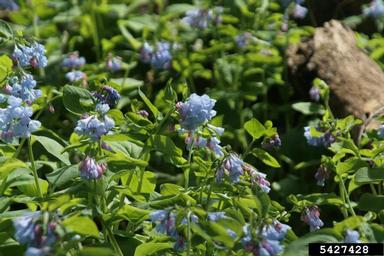Many of our acreages have wooded or shady areas. April's focus is on a plant that works well in those wooded or shady areas of our landscapes, the Virginia bluebell.
Virginia bluebell, Mertensia virginica, is a beautiful perennial plant that blooms in the spring, usually April to May, and goes completely dormant by the middle of May. Leaves emerge early in the spring as purple-colored spikes that turn into light green-colored leaves. The leaves are oval in shape and can grow to be 4-12 inches long and 3-4 inches wide, with the larger leaves at the base of the plant. The flowers also change color through their growth; they begin as pink buds and turn into blue bell-shaped flowers. The flowers are held in small clusters on the ends of 18-inch tall stalks. Virginia bluebells will naturalize in an area by reseeding themselves.
Virginia bluebells are great plants to use under trees and in shady areas. They prefer full to part shade and like consistently moist soils. They will live in sunny locations, but tend to go dormant sooner than they would in the shade. This is a good plant to use among summer perennials so that the summer plants hide the bare spots that are left when the Virginia bluebells go dormant so early in the spring. These plants will tolerate black walnut toxicity, so they are a good plant to use around black walnuts, where not very many other plants may survive.
Native Americans believed a tonic made from this plant could help heal those who were under-the-weather. According to St. Olaf College in Minnesota, uses of Virginia bluebells have been studied but offer no scientific proof that this plant can be used for medicinal purposes.
Virginia bluebells are a great plant for pollinators, although only certain insects can pollinate this plant without tearing through the side of the flower. Because this flower has a long tube-shaped flower, only an insect with a long proboscis (mouthpart of an insect) can pollinate this flower. Some insects will break through the side of the flower to get to the nectar, which does not pollinate the flower and reduces its aesthetic quality.
Virginia bluebells are great to use anywhere in our landscapes that are shady and somewhat moist. Consider planting them if you like to watch butterflies and bees, and want a flush of blue in the early spring to mix with your yellow daffodils. Are you looking for a plant that has an early spring bloom around your already established perennials? Use Virginia bluebells to bloom early in the spring and then go dormant and disappear from sight afterward.
Photo of Virginia Bluebells above is by Wendy VanDyk Evans at Bugwood.org.

